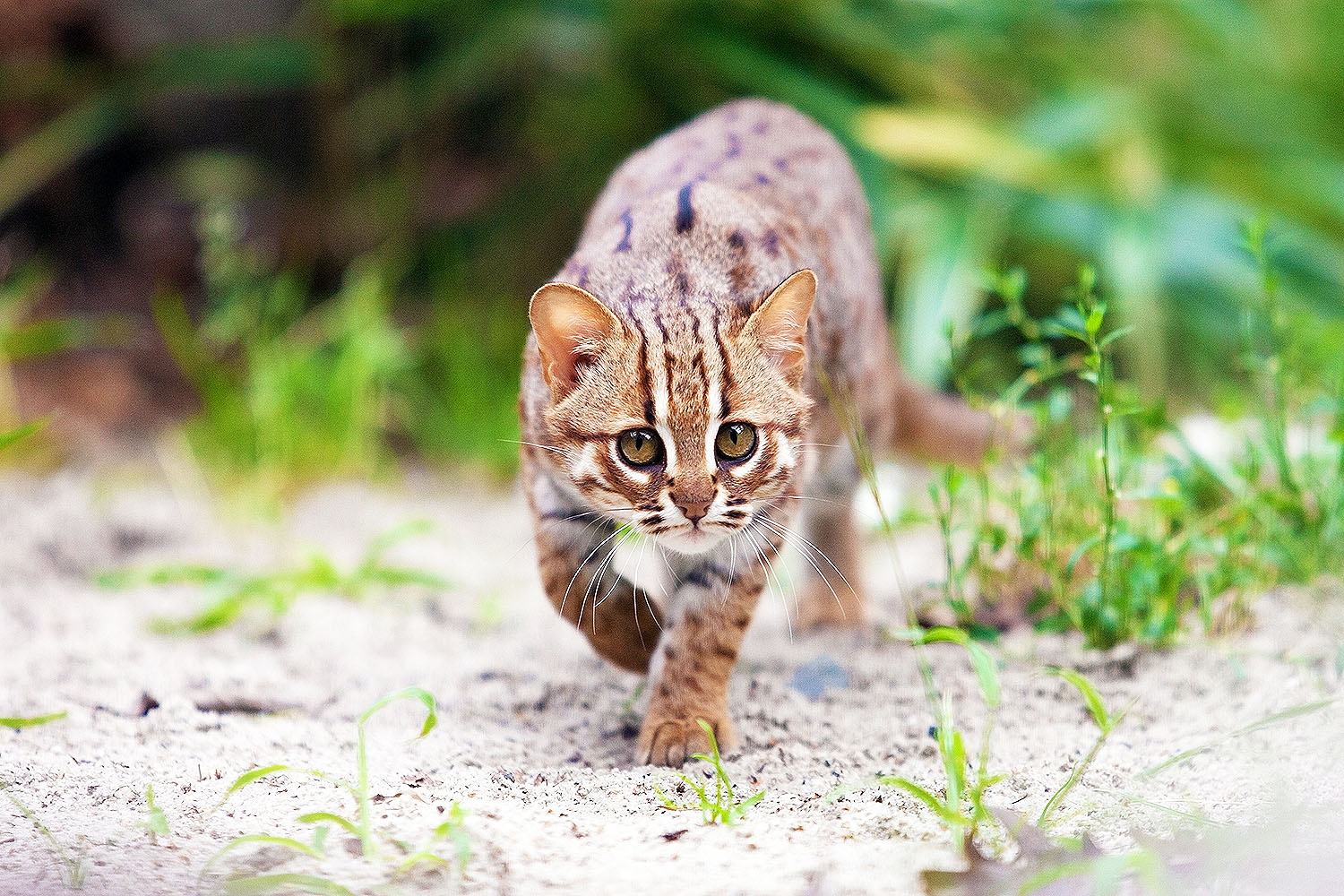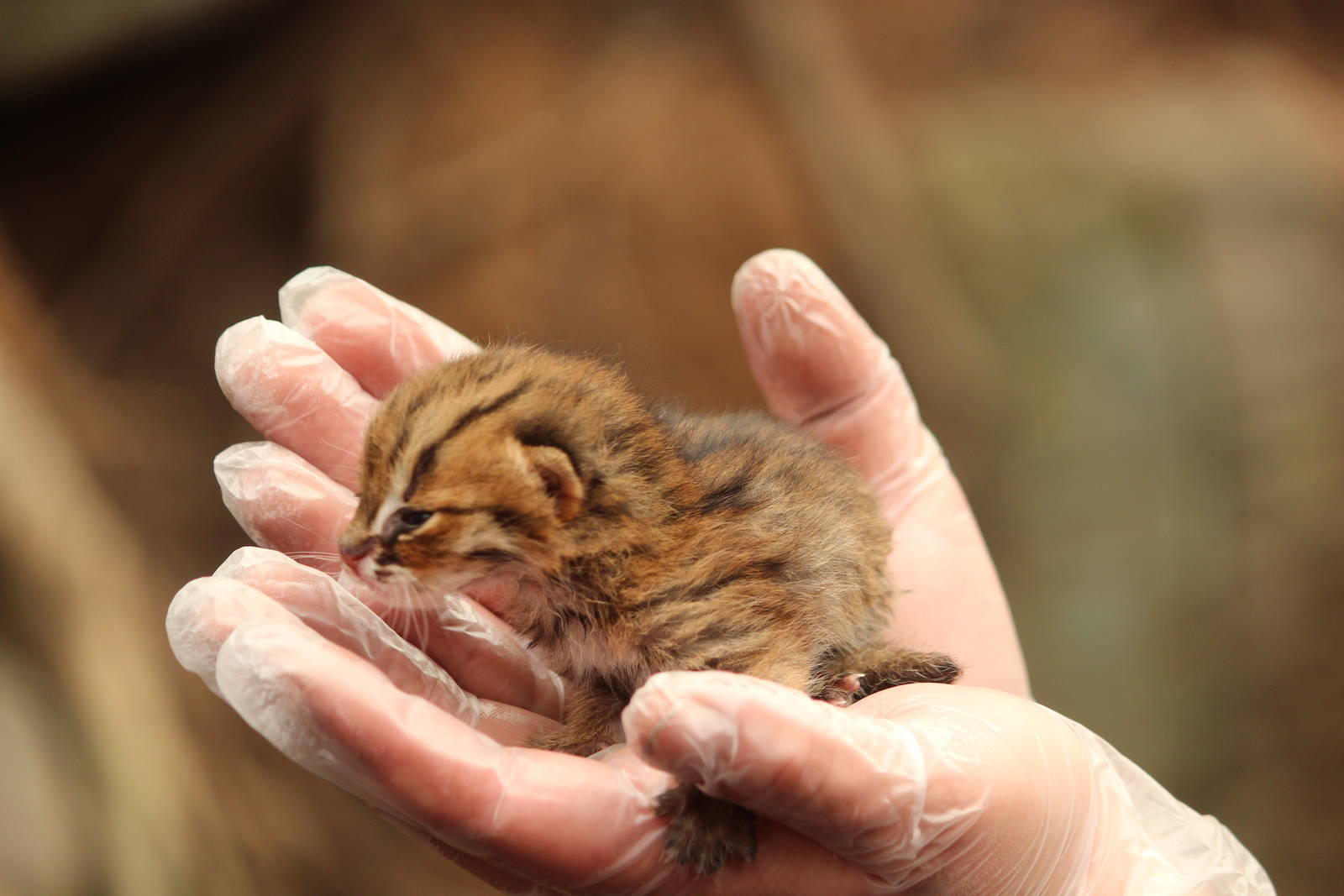The Rusty-spotted cat, also known as the 'hummingbird of the cat family', is one of the smallest wild cat species in the world. With its diminutive size and striking appearance, this feline is a fascinating creature to learn about. The Rusty-spotted cat weighs only 2-3 pounds and has a body length of 14-19 inches. Despite its small size, this wild cat is a skilled hunter and can take down prey much more significantly than itself. In this blog, we'll explore the Rusty-spotted cat's unique characteristics, behaviours and explore why it is considered one of the most impressive small cats in the animal kingdom.
A Closer Look at the Rusty-Spotted Cat
Here are some key facts about this fascinating creature:
- HB Length: 35-48 cm (13-19′′)
- Tail Length: 15-30 cm (5.9-11′′)
- Height: approx. 20 cm (8′′)
- Weight: 1-1.6 kg (2.2-3.5 lbs)
- Pop. Trend: Decreasing

Unmistakable Appearance
The Rusty-spotted cat's distinctive look starts with its short, reddish-grey fur covering most of its body. Rusty spots decorate its back and flanks, lending to its namesake. Four blackish lines run over the eyes, two extending down the neck. Six dark streaks stretch across the cheekbones and forehead on each side of the head. Its paws and tail are a consistent reddish-grey colour, and the reasonably large eyes range in colour from greyish brown to amber. This petite predator's feet have black soles, and their legs are reasonably short. The tail is unmarked, has the proper length, and is more reddish than the body.
The Rusty-Spotted Cat's Habitat
The Rusty-spotted cat calls southern India and Sri Lanka home. It is a versatile creature that can be found on rocky terrain, hill slopes, tropical thorn forests, moist and dry deciduous forests, scrub forests, grasslands, and arid shrublands. Their existence has been proven in the tropical, arid Gir Forest in northern India, and they can be found in Sri Lanka between sea level and 2,100 metres.
Diet and Hunting Techniques
Rusty-spotted cats have a varied diet, consuming birds and small mammals. Locals tell stories of these secretive cats appearing after heavy rains to prey on the frogs and rodents that surface. The Rusty-spotted cat's hunting prowess surpasses its size. They are known to hunt prey that is much larger than themselves. Their hunting strategy involves a combination of stalking, pouncing, and pursuing, demonstrating their speed and agility.
Behaviour and Lifestyle
The Rusty-spotted cat is a nocturnal creature, often found in a hollow log, tree, or thicket in small woodlands of heavy timber or deep scrub jungles during the day. They are excellent climbers, often spotted in trees, and have been observed pursuing prey by leaping from tree branches. However, they most likely hunt on the ground. When threatened, the Rusty-spotted cat retreats into the trees or seeks refuge in spaces between large boulders or stones. In some areas of its distribution, the Rusty-spotted cat appears to live in caves.
Breeding
The breeding habits of the Rusty-spotted Cat have been observed in captivity and are very similar to those of domestic cats. Mating can last anywhere from one to five minutes and can occur several times throughout the day. Cats typically experience oestrus for about three days, although this can be extended if the female remains unmated. Captive breeding tends to be seasonal, but wild litters have been discovered in February.
After a gestation period of 67 days, a litter of one to three kittens is born in a secluded den. The newborn kittens are incredibly tiny, weighing less than an egg. They lack the rusty markings of the adults and their irises are a pale blue. Little is known about their development, but it likely resembles that of domestic kittens. The lifespan of Rusty-spotted cats in the wild is currently unknown, despite their twelve-year confinement.

Conservation Status
Unfortunately, the Rusty-spotted Cat faces significant threats to its survival. Deforestation and farming practices in Sri Lanka and India have resulted in large-scale habitat loss. The skin of the cat is still traded, and in some locations, Rusty-spotted cats are hunted for food and are frequently killed because they prey on domestic livestock, particularly chickens.
The Rusty-spotted cat is considered rare practically everywhere it is found, and the entire population is estimated to be less than 10,000 mature individuals. Owning a Rusty-spotted cat as a pet is legal in some places, but this small cat breed is rare and isn’t found in many homes as pets. Currently, it is listed as Vulnerable (VU) on the IUCN Red List, and its population continues to decline.
Final Thoughts
The Rusty-spotted Cat, the world's smallest wild cat, is an intriguing creature that deserves our attention and protection. While much focus is often placed on nature's larger and more fearsome predators, we should not forget about these smaller creatures that are equally impressive in their own right. With its hunting prowess, unique characteristics, and rarity, the Rusty-spotted Cat is indeed one of the most impressive small cats in the animal kingdom.



Leave me a comment
Thank you for reading my post, if you want to leave a comment, you can do so below.